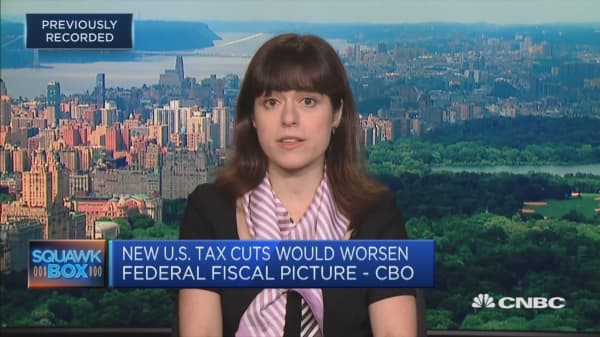Larry Kudlow, President Donald Trump's top economic advisor, said Friday that "the deficit" is "coming down, and it’s coming down rapidly," appearing to contradict both the Treasury Department's official figures and government estimates about the trajectory of U.S. budget deficits.
Kudlow made the claim during an interview on the Fox Business Network while touting the effects of the tax reform law signed late last year.
"As the economy gears up, more people working, better jobs and careers, those revenues come rolling in and the deficit, which is the other criticism, is coming down, and it’s coming down rapidly," Kudlow said. "Growth solves a lot of problems.”
But data from the Congressional Budget Office, a nonpartisan government agency, tells a different story. The CBO said on June 7 that the federal deficit was $530 billion so far in the 2018 fiscal year — $97 billion more than it was at this point last year.






